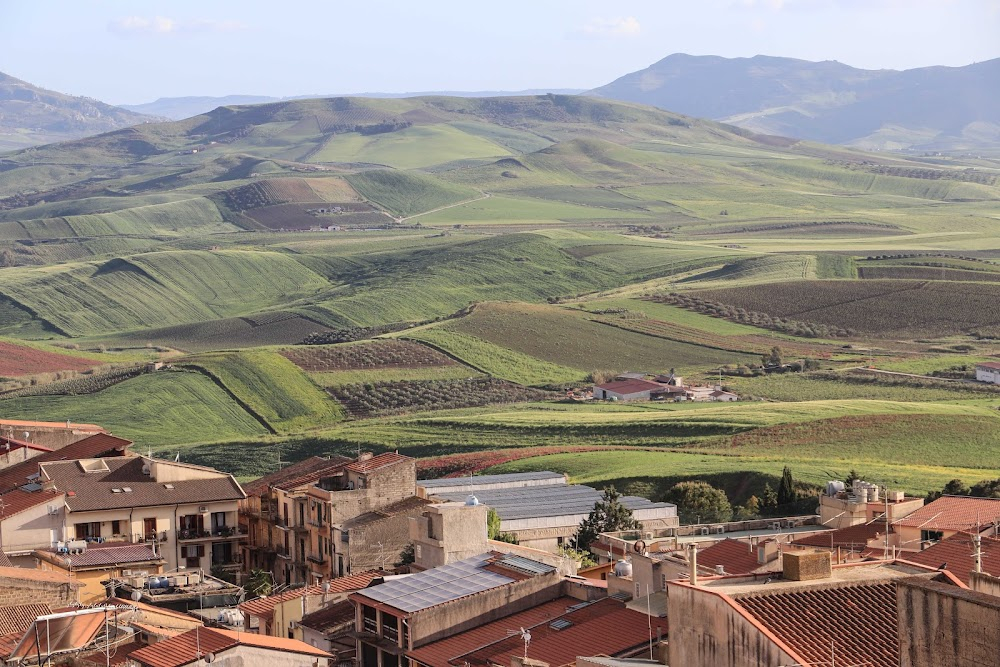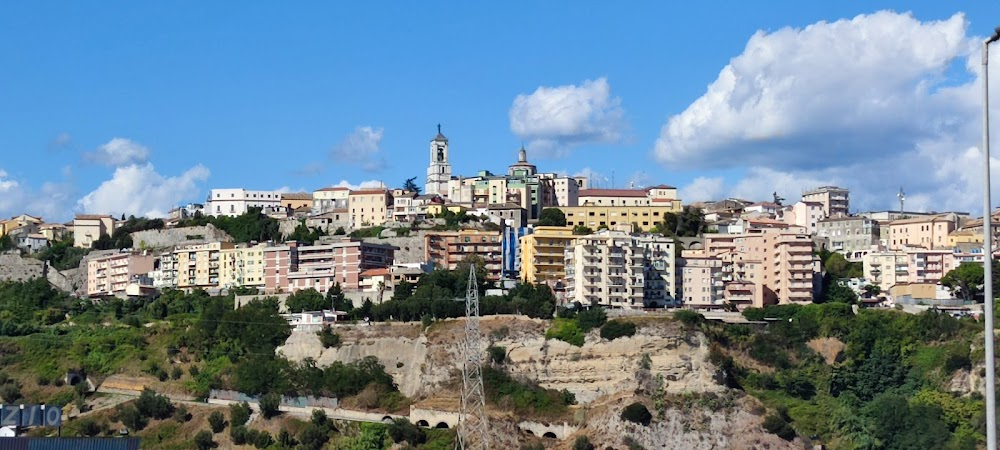Comizi d'amore Filming Locations

Where was Comizi d'amore filmed? Comizi d'amore was filmed in 15 locations across Italy in the following places:
Comizi d'amore Filming Locations
Matera is a city on a rocky outcrop in the region of Basilicata, in southern Italy. It includes the Sassi area, a complex of cave dwellings carved into the mountainside. Evacuated in 1952 due to poor living conditions, the Sassi now houses museums like the Casa Grotta di Vico Solitario, with period furniture and artisan tools. Nearby rock churches include St. Lucia alle Malve, with 13th-century frescoes.
Camporeale is a comune in the Metropolitan City of Palermo in the Italian region Sicily, located about 35 kilometres southwest of Palermo. As of 2023, it has a population of 2.500 people and an area of 38.6 square kilometres. Camporeale borders the following municipalities: Alcamo, Monreale.
Naples is the regional capital of Campania and the third-largest city of Italy, after Rome and Milan, with a population of 909,048 within the city's administrative limits as of 2022.
Palermo is the capital of the Italian island of Sicily. The 12th-century Palermo Cathedral houses royal tombs, while the huge neoclassical Teatro Massimo is known for opera performances. Also in the center are the Palazzo dei Normanni, a royal palace started in the 9th century, and the Cappella Palatina, with Byzantine mosaics. Busy markets include the central Ballarò street market and the Vucciria, near the port.
Rome is the capital city of Italy. It is also the capital of the Lazio region, the centre of the Metropolitan City of Rome Capital, and a special comune named Comune di Roma Capitale.
Fiumicino is a town and comune in the Metropolitan City of Rome, Lazio, central Italy, with a population of 80,500. It is known for being the site of Leonardo da Vinci–Fiumicino Airport, the busiest airport in Italy and the ninth-busiest in Europe, which serves Rome and much of central Italy.
Milan, a metropolis in Italy's northern Lombardy region, is a global capital of fashion and design. Home to the national stock exchange, it’s a financial hub also known for its high-end restaurants and shops. The Gothic Duomo di Milano cathedral and the Santa Maria delle Grazie convent, housing Leonardo da Vinci’s mural “The Last Supper,” testify to centuries of art and culture.
Florence, capital of Italy’s Tuscany region, is home to many masterpieces of Renaissance art and architecture. One of its most iconic sights is the Duomo, a cathedral with a terracotta-tiled dome engineered by Brunelleschi and a bell tower by Giotto. The Galleria dell'Accademia displays Michelangelo’s “David” sculpture. The Uffizi Gallery exhibits Botticelli’s “The Birth of Venus” and da Vinci’s “Annunciation.”
Viareggio, a seaside city in Tuscany, Italy, is known for its Carnival. La Cittadella is a complex housing the Carnival Museum, with small reproductions of the city’s allegorical floats. The Villa Paolina Civic Museums include a museum of musical instruments and an archaeological museum. To the southeast, in the town of Torre del Lago, is Villa Puccini, a museum about the composer in his former lakeside residence.
Bologna is the lively, historic capital of the Emilia-Romagna region, in northern Italy. Its Piazza Maggiore is a sprawling plaza lined with arched colonnades, cafes and medieval and Renaissance structures such as City Hall, the Fountain of Neptune and the Basilica di San Petronio. Among the city’s many medieval towers are the Two Towers, leaning Asinelli and Garisenda.
Emilia-Romagna is a region in northern Italy, extending from the Apennine Mountains to the Po River in the north. It's known for its medieval cities, rich gastronomy and seaside resorts. The capital, Bologna, is a vibrant city with an 11th-century university and arched porticos lining the streets and squares of its medieval core. Ravenna, near the Adriatic coast, is famed for its brightly colored Byzantine mosaics.
Catanzaro, also known as the "City of the two Seas", is an Italian city of 86,183 inhabitants, the capital of the Calabria region and of its province and the second most populated comune of the region, behind Reggio Calabria. The archbishop's seat was the capital of the province of Calabria Ultra for over 200 years.
Cefalù is a coastal city in northern Sicily, Italy. It’s known for its Norman cathedral, a 12th-century fortress-like structure with elaborate Byzantine mosaics and soaring twin towers. Nearby, the Mandralisca Museum is home to archaeological exhibits and a picture gallery with a portrait by Antonello da Messina. The beaches of Mazzaforno and Settefrati lie to the west.
Crotone is a port city in Calabria, southern Italy. The monumental Castello di Carlo V is a 9th-century fortress that was modified in the 1500s. The National Archaeological Museum houses items, including a gold tiara, unearthed at the ancient Temple of Hera Lacinia in the nearby Capo Colonna Archaeological Park. Farther south is the Capo Rizzuto Marine Protected Area, with seagrass forests, barracudas and starfish.
Comizi d'amore (1964)
Director Pasolini traverses Italy in 1963 with camera and microphone interviewing people in public places about sex, marriage and gender roles.


